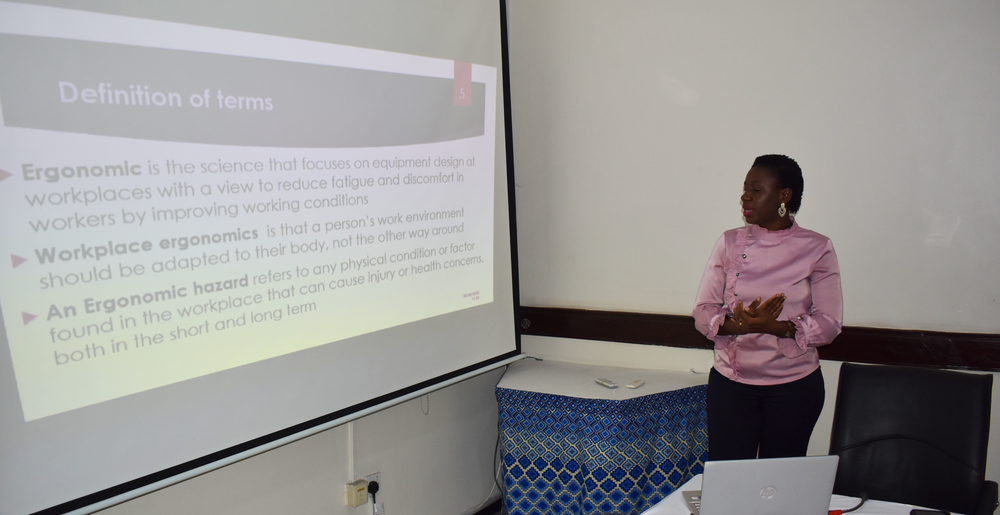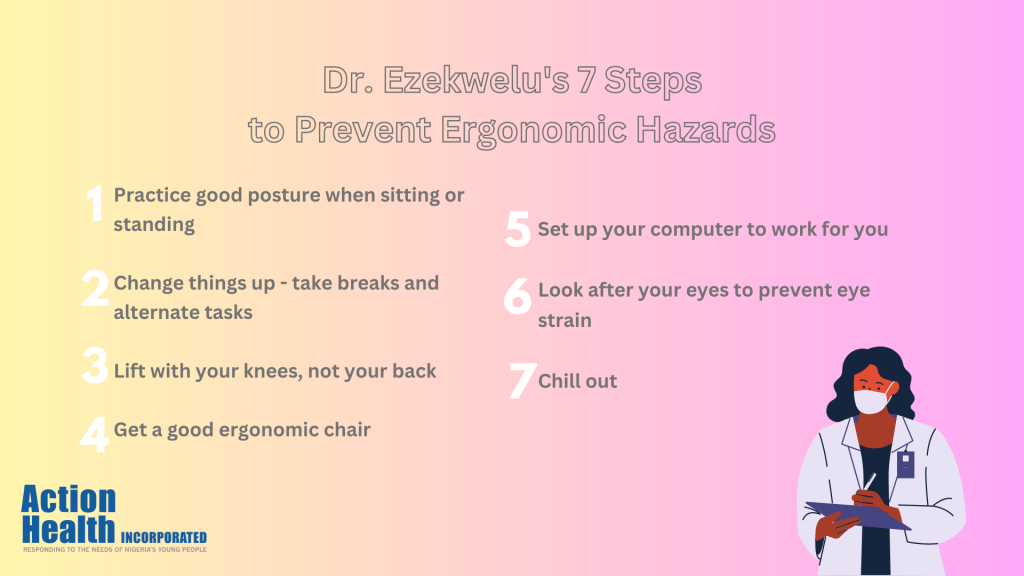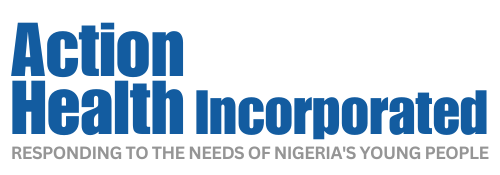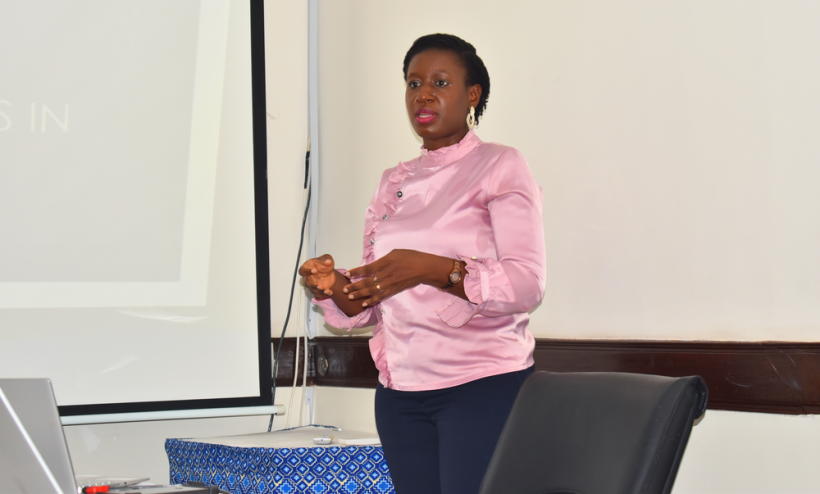As part of our provision of youth-friendly services, Action Health Incorporated has an established a partnership with the College of Medicine, University of Lagos’ (CMUL) Department of Community Health and Primary Care which provides 12 doctors undergoing post-graduate training to serve month-long residency rotations over the course of the year.
During each doctor’s residency they provide clinical services to adolescent and youth clients in the AHI Youth-Friendly Clinic and facilitate discussions to address SRH issues identified during the regular group educational sessions within the facility. At the end of their residency at AHI, each doctor customarily gives a presentation on a health topic related to adolescents and youths for the benefit of AHI team members.
In April, Dr. Jacinta Ezekwelu served as AHI’s resident doctor and at the end of her residency she gave an enlightening presentation on “Ergonomic Hazards in the Workplace.” She indicated that although most people are unlikely to consider workplaces unsafe, they pose the serious hidden risk of musculoskeletal disorders (MSDs). These are the result of repetitive motions, sedentary workdays, eye strain, and numerous other factors that contribute to 50 to 80 percent of workplace injuries in Nigeria.

In her presentation, Dr. Ezekwelu introduced the attendees to the concepts of ergonomics, workplace ergonomics, and ergonomic hazards. She also described common ergonomic injuries in the workplace (including MSDs such as carpal tunnel syndrome, tendonitis, back pain and neck pain and others such as repetitive strain injury, fatigue, migraine headaches, and eye strain) and gave seven key steps to prevent ergonomic injuries in the workplace.
When asked what the biggest ergonomic hazard in the workplace is, Dr. Ezekwelu asserted that “the biggest hazard in offices is poor posture and it affects workers in industries that sit or stand for long periods.” Research indicates that one of the most significant ergonomic hazards in the workplace is prolonged sitting or standing. Office workers who spend long hours sitting at their desks can experience strain on their back, neck, and shoulders leading to pain and discomfort, as well as an increased risk of developing chronic conditions such as obesity, diabetes, and heart disease. On the other hand, workers who stand for extended periods, such as assembly line workers, can experience pain and discomfort in their feet, legs, and lower back.
The most common ergonomic injury to young people according to Dr. Ezekwelu is “musculoskeletal disorders, usually in the form of back pain” and that “the key to prevention is good posture, whether it is when sitting or standing.” This is why her first key step to prevent ergonomic injuries in the workplace is to practice good posture. Other steps include alternating tasks to avoid buildup of tension or strains, getting a good ergonomic chair, and taking suitable breaks to relieve stress.

Finally, we asked her what the single most important message she would like to get across to Nigerians about ergonomic hazards in the workplace would be. “Ergonomic hazards’ associated health effect is like a hidden injury, usually not recognized early but causes a lasting debilitating effect on people,” she said. “Awareness and communication of the risk associated with these hazards should be communicated regularly to workers. To Nigerians, your health should be paramount – protect it, identify hazards in your workplace, and prevent them.”


Leave a Reply
You must be logged in to post a comment.